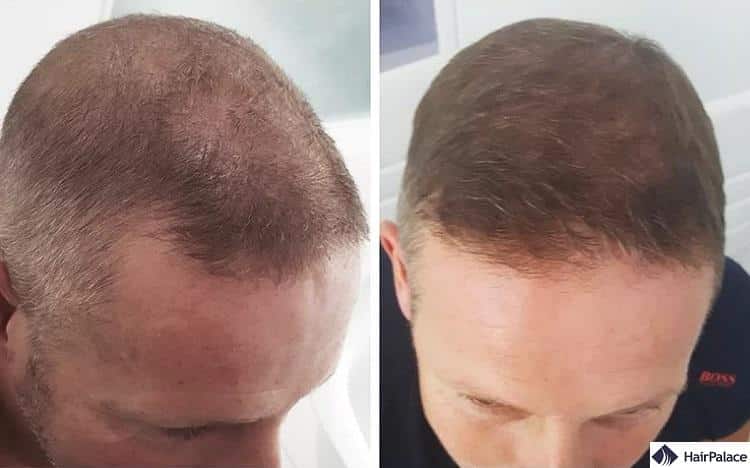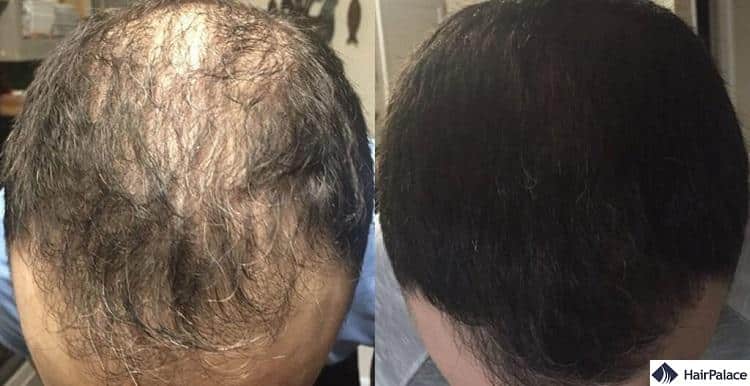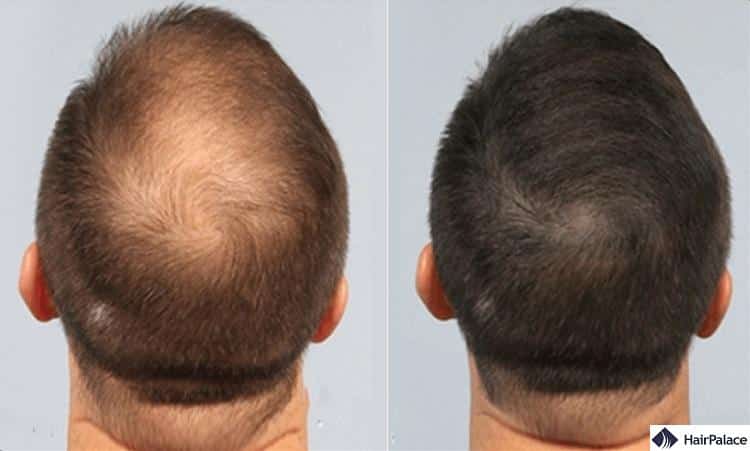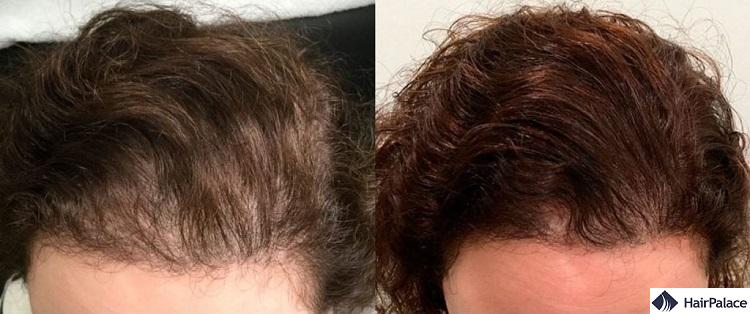PRF Hair Treatment: Everything You Should Know in 2025
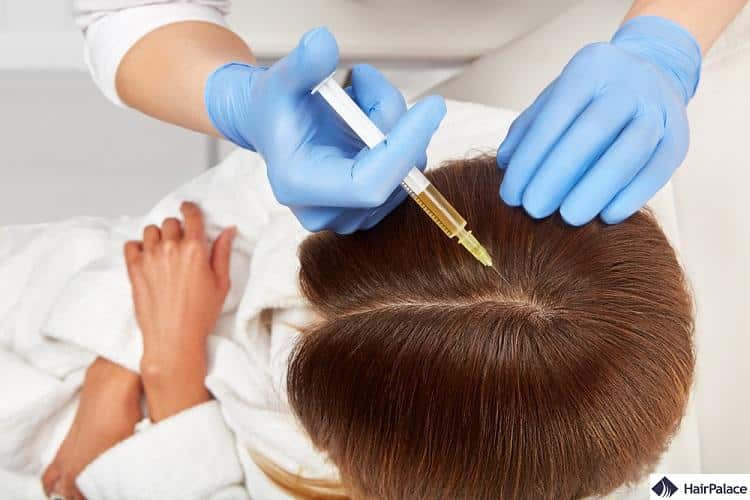
PRF uses platelet-rich fibrin to boost blood circulation, help support repair cells for skin rejuvenation, and ultimately stimulate hair growth.
Though still a relatively new treatment, current research suggests that PRF is a promising remedy for various hair loss conditions, including hair thinning, androgenic alopecia, and more.
And because it is minimally invasive, it’s a convenient alternative to surgery for many people.
But as a new hair treatment, you no doubt have many questions about what PRF can do for your hair. And we’re here to help you find answers.
This article will explore PRF in detail. We’ll cover everything from the science behind the treatment and how each session is carried out to its benefits, potential costs, and the considerations you need to make.
- What is it?
- Quick guide
- Procedure
- Benefits
- Results
- Who’s it for?
- Costs
- Considerations
- PRF vs. PRP hair treatments
- Summary
What is PRF hair treatment?
Simply put, PRF hair treatments use high concentrations of materials from your blood to stimulate cell regeneration and healing in areas affected by hair loss and encourage new hair growth.
Blood is drawn from the person and processed using centrifugal force (spinning at high speed) to separate its properties.
Valuable materials, such as platelets, fibrin, and white blood cells, are extracted, developed into an injectable, and injected directly into the scalp.
This influx of helpful cells can boost blood circulation, reduce swelling, promote healing, and ultimately improve hair regrowth.
Dormant hair follicles can be triggered back into action, thus helping correct various hair loss conditions.
PRF is a versatile treatment that is not only used in hair restoration but also in dentistry, orthopaedics, and facial surgeries.
The injectable form of the treatment, which is used for hair, is often referred to as i-PRF (Injectable platelet-rich fibrin).
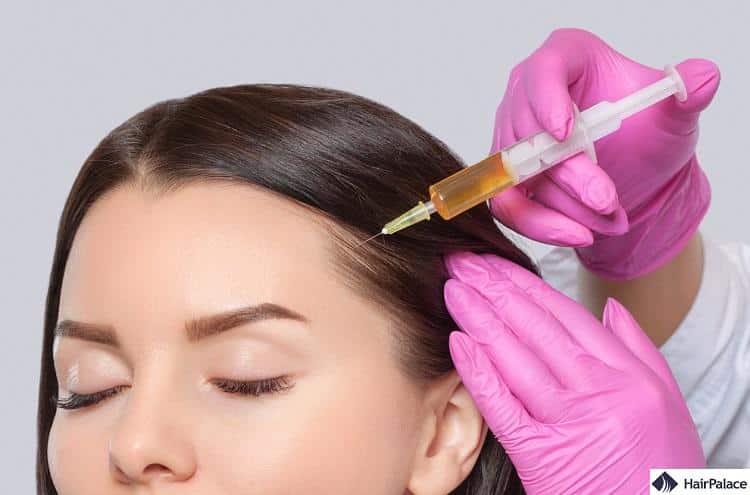
What is platelet-rich fibrin?
Platelet-rich fibrins come from naturally occurring material found in your blood.
When drawn, your blood is separated through centrifugal force, where it is then processed.
Concentrated forms of platelets, growth factors, stem cells, and a protein called fibrinogen are collected together.
While an anticoagulant is added in PRP treatment to slow the clotting process, platelet-rich fibrin for hair growth does not involve this step.
Instead, natural fibrinogen can convert into fibrin, a spongy-like matrix that can help activate platelets more effectively.
Fibrin plays a pivotal role in blood clotting and wound healing.
Combined with platelets and growth factors, the treatment can promote healing and regeneration and stir dormant hair follicles back into activity, thus countering hair loss.
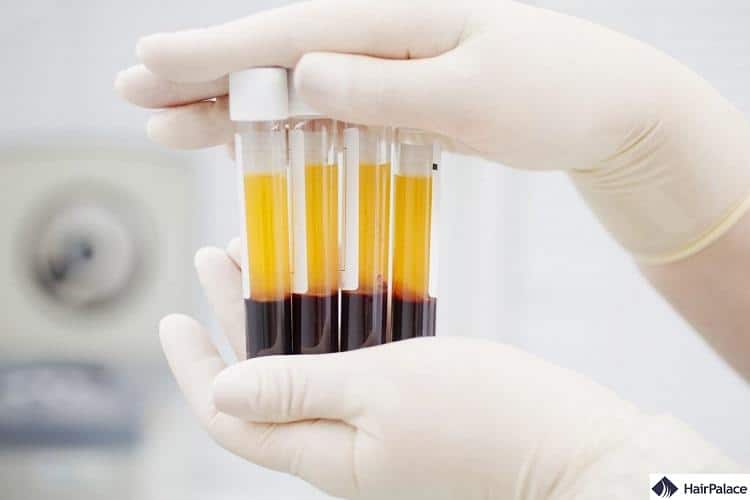
Platelet-rich fibrin (PRF) for hair growth: Quick guide
| Treatment time | 45 minutes |
| How often | 1-2 months or 6 times a year |
| Recovery time | Virtually no downtime |
| Suitable hair types | All |
| Results | in 3 to 6 months |
| Costs | typically around £300 – £500 per session |
Platelet Rich Fibrin procedure
The procedure for platelet-rich fibrin hair treatment is relatively straightforward. There are four key stages to be aware of:
- Collecting blood: The surgeon will draw a few vials of the patient’s blood.
- Centrifugation: The blood is placed in a specialized machine that uses centrifugal force (high-speed spinning) to isolate platelet-rich cells, white blood cells, and stem cells from the other parts of your blood.
- Extraction: Useful cells and growth factors are extracted and combined with fibrin gels to create the PRF injectable solution.
- Injection: The PRF solution is then strategically injected into areas of the scalp suffering hair loss, taking 30 minutes to complete.
Most patients experience a noticeable improvement in hair density six months after treatment.
That said, it is highly recommended you undergo multiple sessions spaced out across the year to further boost and maintain results. If you stop treatment, hair may revert to its previous condition.
Some hair clinics may combine PRF injections with other hair loss treatments, like mesotherapy, or topical treatments, like hyaluronic acid.
There is insufficient concrete evidence to suggest whether these treatments are more effective when combined.
What are the benefits of PRF treatment?
A range of benefits makes PRF an attractive treatment for combating hair loss. They include:
- Nutrition: PRF treatments improve the number of nutrients and minerals that reach hair through the blood supply. Strands receive everything they need to grow to their potential.
- Revival: Once dormant, hair follicles can be stirred back into action and produce hair again. This can dramatically improve thinning hair.
- Healing: Fibrin stimulates collagen and elastic production in the skin, promoting better tissue healing. Additionally, concentrated white blood cells can help heal physical trauma your scalp may have recently suffered.
- Reduced shedding: Because PRF injections push hair follicles into the growing phase, this can decrease the number of follicles in the exogen phase of the hair growth cycle, thus reducing hair loss.
- Natural: PRF is 100% natural, only using the resources created in your own body. There are no additives and a reduced chance of complications or reactions.
- Long-lasting: PRF is seen as a long-lasting treatment, helped by the fact you attend follow-up sessions. You can ensure maximum coverage by spacing your sessions regularly across the year.
- Improved hair thickness: Growth factors from PRF treatments can help bolster your hair during its growing phase, resulting in thicker, denser-looking hair strands in only a few sessions.
PRF treatment Before and After pictures
Platelet-rich fibrin before and after photos are a great way to see what you can expect from this treatment.
When can you see the results PRF injections for hair loss
Every patient and hair loss condition is unique, so the time it takes for results to appear can vary.
After all, the hair follicles treated may take some time to activate, so patience is required.
Many patients notice visible hair quality and quantity improvements from three months on.
You might only see the full effect of treatment from six months on.
Who is a good candidate?
PRF therapy for hair is a popular hair restoration treatment because most people suffering from hair loss are ideal candidates.
PRF can combat many root causes of hair loss, including poor diet, stress, hormonal changes, and hereditary conditions like androgenic alopecia.
That said, there are a small minority of people for whom the treatment may be unsuitable. PRF does not simply create new hair follicles.
People who suffer from conditions that permanently damage a hair follicle, such as scarring alopecia, might not experience any improvements.
There are also alternative therapies to consider, some of which might be more effective for your hair loss.
For example, people who have suffered extensive or prolonged balding may have better results by opting for alternative treatments like hair transplantation surgery.
The cost of PRF hair restoration
Cost is a deciding factor in what hair loss treatment you get and from which clinic.
The cost of PRF can depend on the reputation of the clinic and the level of treatment you require.
On average, clinics will charge between £500 to £2000 per treatment.
Because PRF often requires several sessions, many clinics offer competitive packages to help reduce PRF hair treatment costs and offer various payment plans.
One thing to remember about PRF is that you must repeat your treatment indefinitely to maintain its results.
While the cost may seem minor initially, remember that you may need to spend more across many years.
For this reason, researching other permanent treatments, like hair transplantation, is worthwhile.
Things to consider before you commit to PRF hair restoration

There are two primary considerations for people interested in undergoing platelet rich fibrin hair loss treatment.
Investment
Firstly, PRF therapy for hair requires you to be patient and make a long-term investment.
You will need to go for at least more than one session and continue to get additional treatments every month or two going forward.
And because patients need to continue receiving PRF to maintain results, you must budget accordingly for the long haul.
Side effects
Although PRF is a suitable treatment for most people, there are side effects and complications that you need to be aware of.
Common side effects you might experience include bruising and swelling around the targeted area.
Your scalp may also become red following the procedure, and you might develop mild headaches.
While these are often temporary, addressing any concerns you might have with your haircare specialist before treatment is worth addressing.
PRF vs PRP hair treatment: What is the difference?

Despite their similar names, there are many critical differences between PRF (platelet-rich fibrin) and PRP (platelet-rich plasma).
Ultimately, research has shown PRF injections for hair loss to be an overall more promising therapy.
Below are some key differences to consider:
1. Enhanced results
Scientific studies thus far have shown promising results on the effectiveness of platelet-rich fibrin hair treatment.
They’ve found that PRF uses a higher concentration of platelets, blood cells, and stem cells and, as such, can promote superior healing and hair regrowth.
To put this into perspective, PRF contains almost ten times the concentration of platelets typically found in the body.
This ensures that treated skin tissue becomes much more effective at cell repair and regeneration, creating the ideal environment to sustain new hair regrowth.
2. More straightforward and effective
Although both treatments use centrifugal force in their execution, PRF spins your blood at a much lower speed.
This simplified process earns additional benefits, including allowing white blood and stem cells to remain within the layer of platelets.
More white and stem cells present boost the healing properties of every PRF injection.
3. Completely natural
PRP uses an anticoagulant called acid citrate dextrose (ACD) during production.
This prevents blood from clotting too quickly and helps preserve the stability and structure of platelets.
PRF therapy is entirely natural and doesn’t use these agents. Instead, the natural fibrinogen found in the blood converts into fibrin, creating the signature spongy fibrin matrix.
This matrix has many benefits to your cells, including helping platelets work more effectively and slowing down the release of growth and healing factors in the treatment.
This results in additional tissue regeneration and better hair regrowth.
Summary
Although a relatively new treatment and further research are needed, PRF shows promising signs of treating various hair loss conditions, from hair thinning to androgenetic alopecia.
It is an excellent treatment to support and reactivate struggling hair follicles, helping to improve hair density and appearance.
That said, platelet-rich plasma treatments are but one area of hair restoration you can consider.
Other alternatives include laser treatments, medication, and crown hair transplant surgery.
PRF Hair Treatment FAQ
Platelet Rich Fibrin (PRF) is a concentration of platelets and growth factors created from a person’s own blood. It is used in various medical and cosmetic procedures to promote healing and tissue regeneration.
Platelet-Rich Fibrin (PRF) can be effective for hair loss. PRF promotes hair growth by stimulating hair follicles, improving blood flow, and delivering growth factors to the scalp. It is often used for androgenetic alopecia and thinning hair. Results may vary, and multiple sessions are typically needed for noticeable improvement.
Last medically reviewed on January 22nd, 2025
- Shashank B, Bhushan M. Injectable Platelet-Rich Fibrin (PRF): The newest biomaterial and its use in various dermatological conditions in our practice: A case series. J Cosmet Dermatol. 2021 May;20(5):1421-1426. doi: 10.1111/jocd.13742. Epub 2020 Oct 12. PMID: 32996229.https://pubmed.ncbi.nlm.nih.gov/32996229/
- Lu K, Han Q, Ma Z, Yan Q, Pei Y, Shi P, Zhang J, Rong K, Ma K, Li P, Hou T. Injectable platelet rich fibrin facilitates hair follicle regeneration by promoting human dermal papilla cell proliferation, migration, and trichogenic inductivity. Exp Cell Res. 2021 Dec 1;409(1):112888. doi: 10.1016/j.yexcr.2021.112888. Epub 2021 Oct 26. PMID: 34715152.https://pubmed.ncbi.nlm.nih.gov/34715152/
- Cecerska-Heryć E, Goszka M, Serwin N, Roszak M, Grygorcewicz B, Heryć R, Dołęgowska B. Applications of the regenerative capacity of platelets in modern medicine. Cytokine Growth Factor Rev. 2022 Apr;64:84-94. doi: 10.1016/j.cytogfr.2021.11.003. Epub 2021 Dec 2. PMID: 34924312.https://pubmed.ncbi.nlm.nih.gov/34924312/
- Sharma A, Chouhan K, Bhatia S, Dashore S. Platelet-Rich Plasma in Androgenetic Alopecia. Indian Dermatol Online J. 2021 Nov 25;12(Suppl 1):S31-S40. doi: 10.4103/idoj.idoj_328_21. PMID: 34976879; PMCID: PMC8664169.https://pubmed.ncbi.nlm.nih.gov/34976879/

